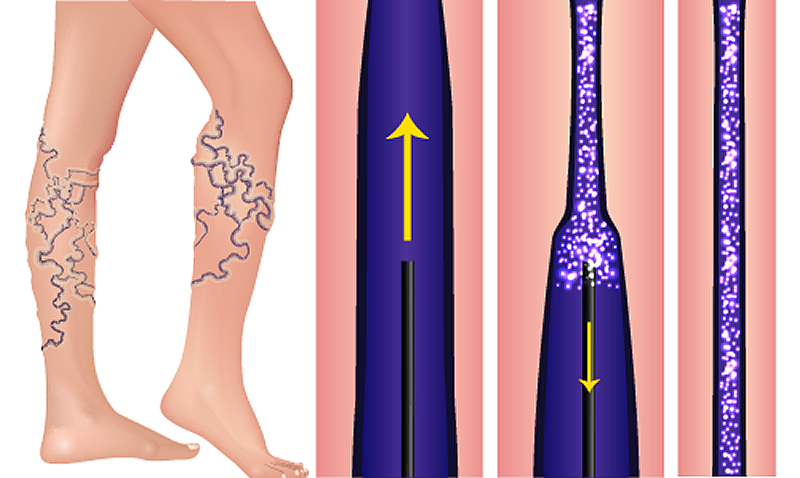
Get rid of painful leg veins with sclerotherapy
Sclerotherapy is a tried and tested non-surgical treatment for removing varicose veins and spider veins safely. Sclerotherapy is the oldest and still most effective way to get rid of leg veins.
While the process has been refined since it was first developed, it works on the same simple principle and involves minimal pain.
At Sydney Cosmetic Clinic we use sclerotherapy to help patients with varicose veins and spider veins on their feet, ankles, calves and legs.
The Sclerotherapy Process
During the sclerotherapy treatment process a fine needle is used to inject each varicose vein with a highly concentrated solution, the sclerosing agent.
This agent causes the veins to harden then gradually disappear. First, the vein walls swell. Then they seal shut together, blocking off the vein. This forces the blood to re-route itself to a healthy functioning vein. Over time, the body absorbs the damaged vein, which is now scar tissue, and it is less visible and the pain resolves.
After sclerotherapy treatment
To assist in the healing of the leg veins, you may be asked to wear compression stockings or socks for the first few days after treatment. This maintains compression on the treated leg veins and prevents swelling and inflammation.
It is also important to keep walking and moving your legs after sclerotherapy treatment to prevent blood clots (DVT) forming.
It is best to avoid the sun after treatment – this may create dark spots on the injection site.
Treatments required
After sclerotherapy it may take up to six weeks for a vein to disappear.
Depending on the size of the leg vein being treated it may take between 3 – 6 sclerotherapy treatments for a vein to disappear. Depending on the the extent of the veins, sclerotherapy therapy can be completed about every 4 – 6 weeks.
Spider veins generally may require less than 3 treatments.
Things to know about sclerotherapy
Many clients notice an improvement to their leg veins within 3 – 6 weeks, especially spider veins.
Sclerotherapy treatment does not require anaesthesia so clients can return to normal activity right after treatment, including returning to work.
Clients may experience minor cramping or stinging as the needle is injected into the vein during the sclerotherapy process.
Clients can avoid the potential risk of Deep Vein Thrombosis (DVT) by wearing compression stockings and walking regularly.
Potential side effects include:
- Swelling, especially when large leg veins are being treated. This can be prevented by wearing compression stockings after sclerotherapy treatment.
- Bruising and stinging, or raised red patches, at the injection site. This will disappear after treatment.
- Skin discolouration, including spots, brown lines, or groups of fine red blood vessels around the treated leg vein. These side effects also usually go away shortly after treatment.